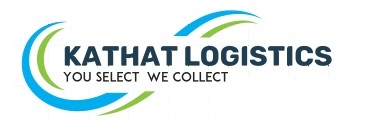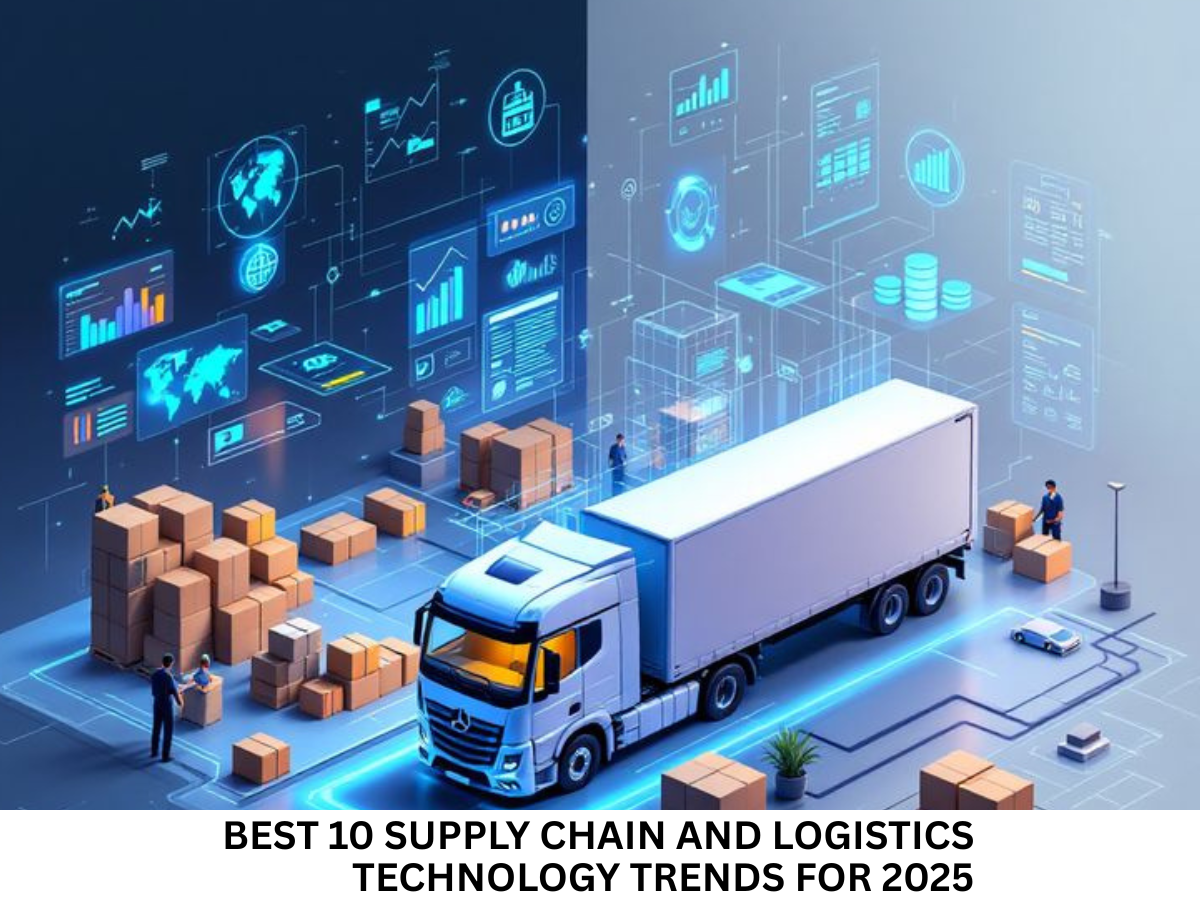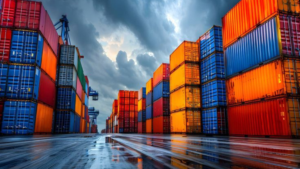The supply chain and logistics industry is transforming rapidly in 2025, driven by advancements in digital technology, AI, automation, and sustainability. From smarter warehouses to predictive shipping and green logistics, the trends shaping this sector are revolutionizing how goods move from factory floors to customers’ doors.
What is the Latest Technology in Supply Chain Management with an Example?
One of the latest and most impactful technologies in supply chain management is Artificial Intelligence (AI) combined with Machine Learning (ML). It is very important.
🔍 What It Does AI and ML technologies help?
AI and ML technologies help are following –
- Predicting demand with high accuracy
- Optimizing delivery routes
- Automating warehouse operations
- Improving inventory management
- Predicting demand with high accuracy
- Reducing human error and delays
Real Example – Amazon’s AI-Driven Supply Chain
Amazon uses advanced AI and machine learning algorithms to manage one of the most complex supply chains in the world. Here’s how:
- Demand Forecasting: Amazon predicts what products will be needed in which locations using customer data, past orders, and browsing patterns.
- Robotic Warehouses: AI-powered robots help with picking, packing, and sorting inventory, drastically speeding up order fulfillment.
- Smart Routing: Delivery routes are optimized in real time using traffic data and weather updates, reducing delays.
- Autonomous Delivery: Amazon is also testing drone and robotic deliveries to streamline last-mile logistics.
🚀 Why It Matters AI-driven SCM systems help companies?
Because AI-driven SCM system help companies reduce
- Cut costs
- Improve delivery speed
- Enhance customer satisfaction
- Cut costs
- Make real-time, data-driven decisions
In this blog, we explore the top 10 logistics and supply chain technology trends that businesses must watch and adopt in 2025 to remain efficient, competitive, and future-ready.
1. Artificial Intelligence & Machine Learning for Predictive Logistics
AI and ML are no longer optional.They’re essential. Logistics companies in 2025 are increasingly using AI-driven systems for:
- Predictive demand forecasting
- Route optimization
- Intelligent warehouse automation
- Customer behavior analysis
With real-time data analytics, AI is helping businesses anticipate delays, reduce fuel consumption, and improve delivery accuracy.
2. Internet of Things for Real-Time Asset Tracking
IoT-enabled devices are revolutionizing logistics by providing real-time updates on goods, vehicles, and warehouse equipment. In 2025:
- GPS and RFID trackers monitor goods in transit
- Smart sensors track temperature and humidity for perishable goods
- IoT improves warehouse safety and equipment maintenance
This transparency ensures better customer service, reduces lost shipments, and enhances operational control.
3. Blockchain for Transparent and Secure Supply Chains
Blockchain is redefining how transactions and data are recorded in logistics. In 2025, it ensures:
- Tamper-proof documentation of goods movement
- Smart contracts that automate payments and orders
- Transparency and accountability across multi-party logistics networks
Especially in international trade, blockchain enhances trust, reduces paperwork, and prevents fraud.
4. Autonomous Vehicles and Drones for Last-Mile Delivery
2025 is witnessing the rise of self-driving trucks and drones for fast and contactless delivery. Benefits include:
- Reduced human error and fatigue in long-distance trucking
- Drones making fast deliveries in urban and rural areas
- Enhanced delivery speed and reduced labor costs
While still evolving in regulatory compliance, autonomous logistics is rapidly becoming a game-changer.
5. Robotics and Automation in Warehousing
Automated warehouses are now a norm in smart logistics operations. Robotics and AGVs (Automated Guided Vehicles) are handling:
- Picking, packing, and sorting
- Pallet stacking and retrieval
- Inventory tracking and restocking
This results in faster order processing, reduced labor dependency, and improved inventory accuracy.
6. Sustainable and Green Logistics Solutions
With growing pressure for eco-friendly practices, 2025 logistics is greener than ever. Key initiatives include:
- Electric delivery vans and trucks
- Carbon-neutral shipping options
- Sustainable packaging materials
- Route optimization to lower emissions
Businesses are now investing in sustainable logistics to meet environmental goals and satisfy eco-conscious consumers.
7. Cloud-Based Supply Chain Management
Cloud computing allows real-time collaboration across global logistics networks. In 2025:
- Supply chain data is accessible anywhere, anytime
- Cloud ERPs and SCM platforms improve visibility and coordination
- Scalable systems support rapid business growth and adaptability
This tech helps teams make faster, more informed decisions from any location.
8. Hyperautomation in Logistics Operations
Hyperautomation combines AI, ML, IoT, and RPA (Robotic Process Automation) to automate every possible process. In logistics:
- Invoice processing, order scheduling, and shipment updates are automated
- AI chatbots handle customer service and status queries
- Operational errors and processing time are significantly reduced
This trend is helping logistics firms operate with fewer resources while increasing productivity.
9. Digital Twins for Supply Chain Modeling
Digital twin technology creates virtual replicas of logistics networks, vehicles, or warehouses to simulate real-world scenarios. In 2025, it’s used to:
- Forecast supply chain disruptions
- Test inventory and warehouse design improvements
- Optimize fleet management without real-world risk
Companies use digital twins to save costs, improve efficiency, and stay resilient to disruptions.
10. Advanced Analytics & Big Data for Decision-Making
Data is the backbone of modern logistics. With big data analytics, companies can now:
- Understand market demands and customer expectations
- Predict peak shipping seasons and avoid bottlenecks
- Analyze supplier performance and manage risks
By converting data into insights, logistics companies are making smarter, faster, and data-driven decisions.
Conclusion
2025 is a defining year for the logistics and supply chain industry. The integration of AI, IoT, blockchain, automation, and sustainability is not only optimizing operations but also equipping businesses to handle future challenges with greater resilience and efficiency.
Kathat Logistics, known as the best logistics company in Pune, is leading this transformation by embracing these latest technologies to offer smarter, faster, and more reliable services. From intelligent warehousing to green delivery solutions, we are committed to reshaping the future of supply chain management.
As a trusted provider of logistic services in Pune, Kathat Logistics ensures that every shipment is handled with precision, care, and speed. From smarter warehouses to greener fleets, the digital transformation in logistics is here—and it’s moving fast. Businesses that ride this wave with us will improve efficiency, cut costs, and deliver superior customer experiences.
Don’t get left behind. Partner with Kathat Logistics today and experience the future of logistics—today.




